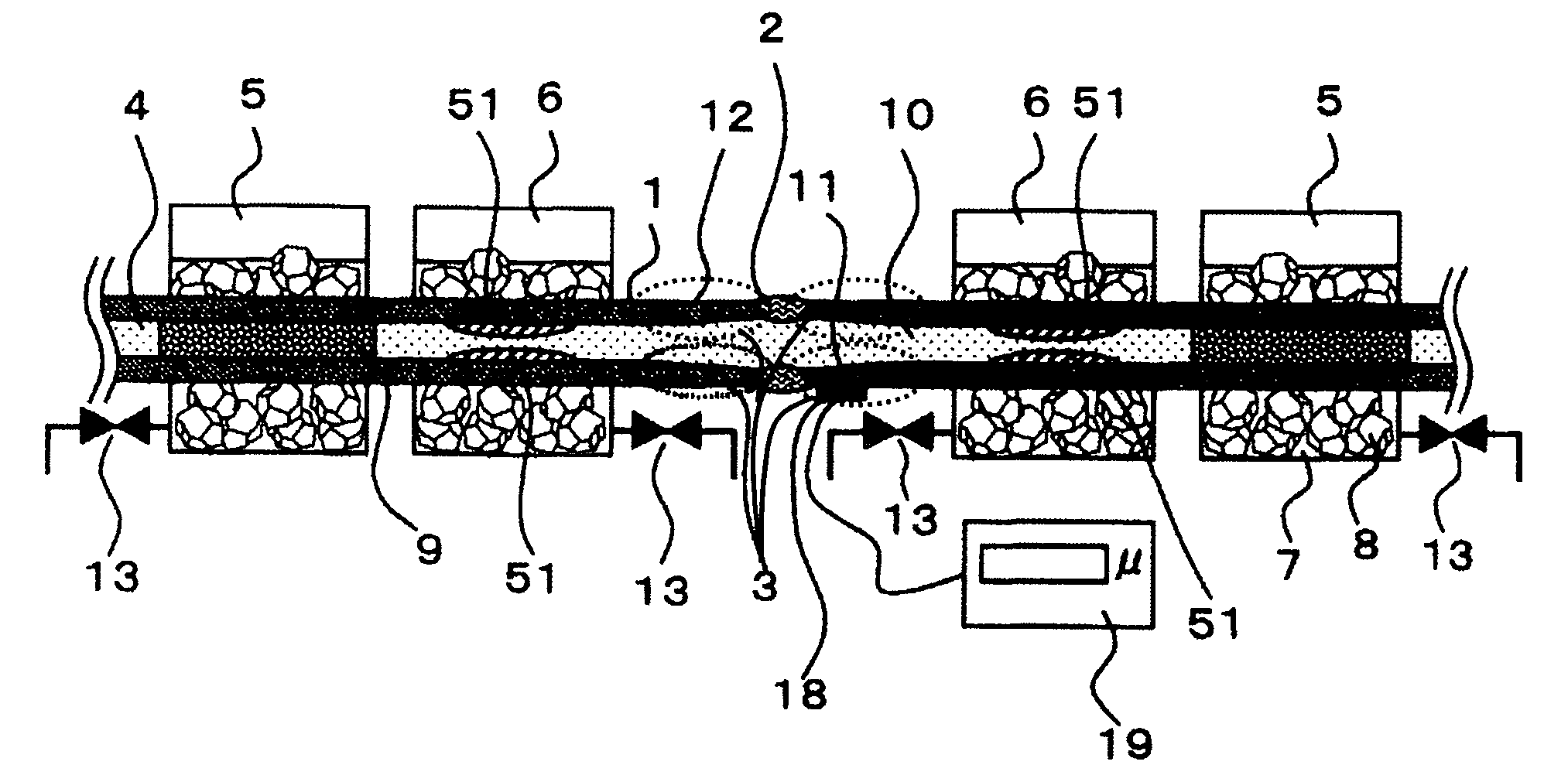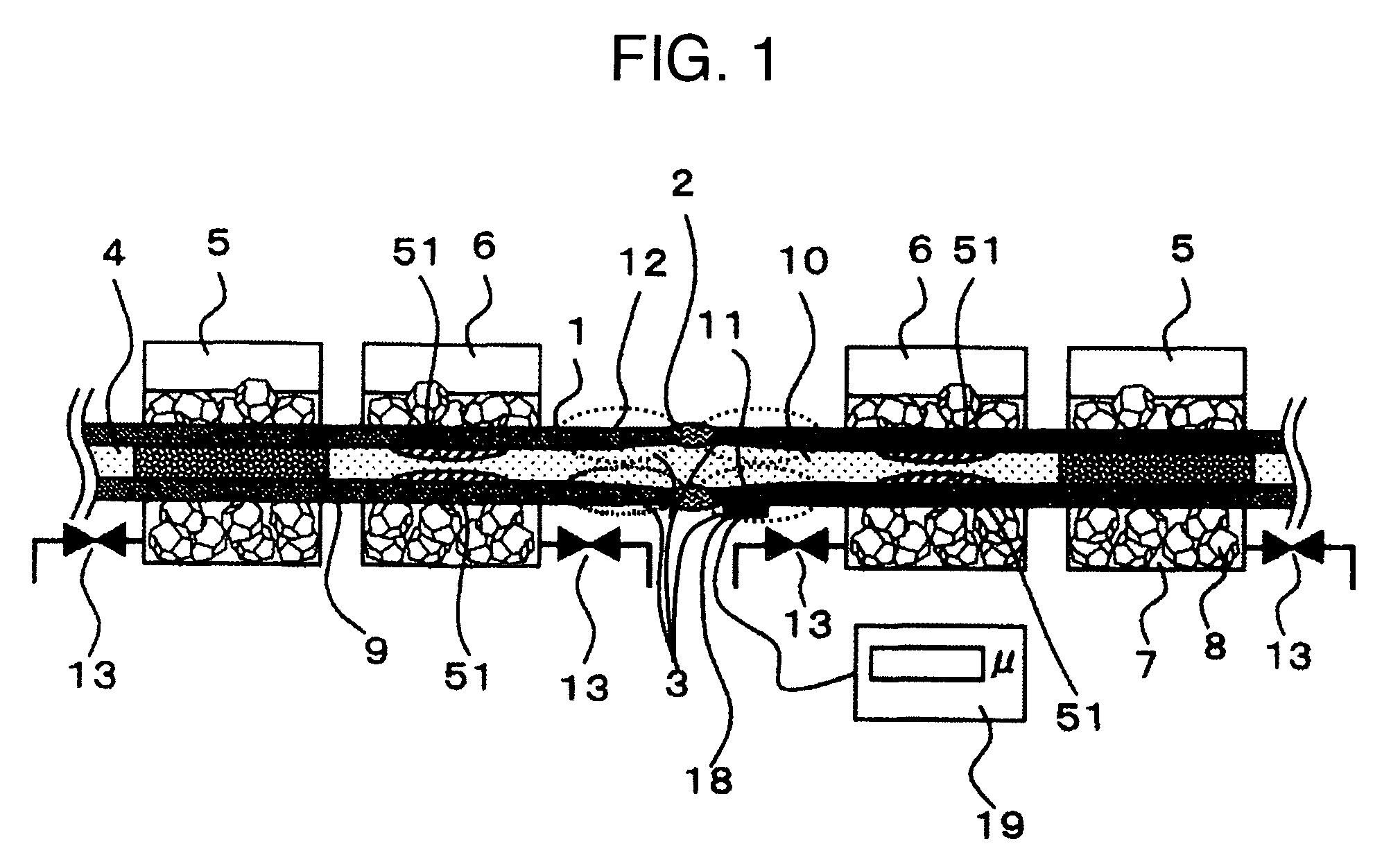Method for improving residual stress in pipe and apparatus
a residual stress and pipe technology, applied in the field of improving residual stress, can solve the problems of stress corrosion cracking of austenitic stainless steel and a nickel-based alloy, affecting requiring a long period of time for completion, so as to improve the efficiency of cooling water, improve the residual stress in the welded part, and improve the effect of pressure inside the pip
- Summary
- Abstract
- Description
- Claims
- Application Information
AI Technical Summary
Benefits of technology
Problems solved by technology
Method used
Image
Examples
embodiment 1
[0026] An execution method according to the present invention will be described with reference to FIG. 1, which converts tensile residual stress on an inner surface of a welded part of a pipe to compressive residual stress, with use of ice plugs formed by cooling the pipe from an outer surface.
[0027]FIG. 1 shows an embodiment of an execution method which is applied to the vicinity of a butt-welded part of a pipe, and includes the steps of: placing refrigerant containers for forming ice plugs in the upstream and downstream of the butt-welded part of the pipe; cooling an outer surface of the pipe to form the ice plugs; and then cooling an outer surface of the pipe with use of at least one refrigerant container for expanding the pipe, which is arranged between the refrigerant containers for forming the ice plugs.
[0028] In the embodiment shown in FIG. 1, there is an edge preparation part 3 with a partially-thin pipe thickness in the vicinity of the butt-welded part 2 of the pipe 1. Th...
embodiment 2
[0036] Another embodiment of an execution method according to the present invention for converting tensile residual stress working on an inner surface of a welded part of a pipe to compressive residual stress with use of an ice plug formed by cooling the pipe from the outer surface will be described with reference to FIG. 3.
[0037]FIG. 3 shows an embodiment of an execution method which is applied to the vicinity of a butt-welded part of a pipe with a large inner diameter, and comprises the steps of: placing refrigerant containers 5 for forming ice plugs in the upstream and downstream of the butt-welded part of the pipe; cooling an outer surface of the pipe to form the ice plugs; and then cooling an outer surface of the pipe with use of at least one refrigerant container 6 for expanding the pipe, which is arranged between the refrigerant containers for forming the ice plugs.
[0038] In the embodiment in FIG. 3, there is an edge preparation part 3 with a partially-thin thickness in the...
PUM
| Property | Measurement | Unit |
|---|---|---|
| residual stress | aaaaa | aaaaa |
| pressure | aaaaa | aaaaa |
| internal pressures | aaaaa | aaaaa |
Abstract
Description
Claims
Application Information
 Login to View More
Login to View More - R&D
- Intellectual Property
- Life Sciences
- Materials
- Tech Scout
- Unparalleled Data Quality
- Higher Quality Content
- 60% Fewer Hallucinations
Browse by: Latest US Patents, China's latest patents, Technical Efficacy Thesaurus, Application Domain, Technology Topic, Popular Technical Reports.
© 2025 PatSnap. All rights reserved.Legal|Privacy policy|Modern Slavery Act Transparency Statement|Sitemap|About US| Contact US: help@patsnap.com



